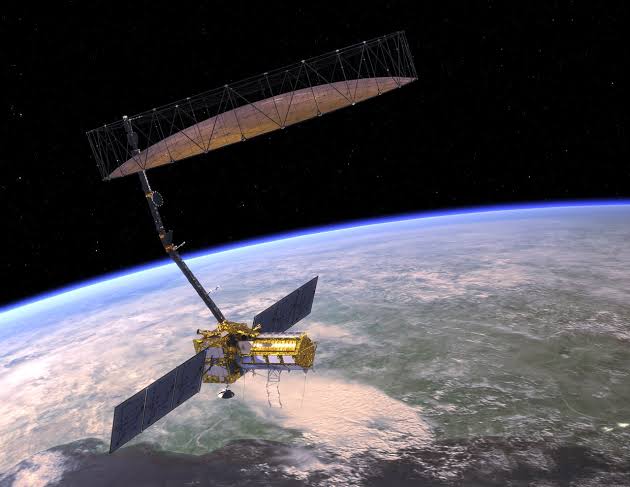The much-awaited NASA-ISRO Synthetic Aperture Radar (NISAR) satellite has finally reached the Satish Dhawan Space Centre in Sriharikota, a key milestone in global space cooperation and Earth science. The satellite, a joint venture of NASA and the Indian Space Research Organisation (ISRO), touched down at 220 miles (360 km) from Bengaluru on 16th May 2025 and will be prepared for its historic launch on 18th June 2025 on ISRO's GSLV Mark II rocket.
NISAR will be the world's most advanced—and expensive—Earth-observing satellite, equipped with cutting-edge dual-frequency radar capability. The mission will revolutionize the way scientists monitor and study dynamic change on Earth, from earthquakes and volcanism to ice sheet movement and changes in ecosystems.
Major Points
-
Historic Collaboration: NISAR will be the first satellite to have two radar systems, NASA's L-band and ISRO's S-band, operating together, the first hardware collaboration of this nature between the two space agencies.
-
Historic Earth Monitoring: The satellite will image almost all of Earth's land and ice surfaces twice within a 12-day period, delivering centimeter-level accuracy data on natural hazards, climate change, and changes in ecosystems.
-
Advanced Technology: It features a 12-meter deployable mesh antenna and latest-generation radar systems capable of cloud-penetrating, foliage-penetrating, and even ground-penetrating day-and-night, all-weather imagery.
-
Global Reach: NISAR's open data policy shall make available 85 terabytes of day-to-day data to researchers, governments, and organizations across the globe at no cost, facilitating disaster management, climate science, and sustainable development.
-
Increased US-India Relations: The mission recommends increased bilateral cooperation in space with the two nations promising to engage in more collaborative projects in advanced spaceflight and satellite technology.
-
Launch Readiness is guaranteed: Following a thorough assembly and testing in Bengaluru, the engineers of the two agencies guaranteed that the satellite is ready for launch to endure the shocks of launch and function perfectly in space.
NISAR's arrival in the Indian launch site is not just a technical success, but also a beacon of peaceful international cooperation, marking the dawn of a new era of global Earth observation and scientific inquiry.
Source: NASA Science Blog, JPL, India Today, Universal Institutions, Rediff
Source: NASA Science Blog, JPL, India Today, Universal Institutions, RediffThe much-awaited NASA-ISRO Synthetic Aperture Radar (NISAR) satellite has finally reached the Satish Dhawan Space Centre in Sriharikota, a key milestone in global space cooperation and Earth science. The satellite, a joint venture of NASA and the Indian Space Research Organisation (ISRO), touched down at 220 miles (360 km) from Bengaluru on 16th May 2025 and will be prepared for its historic launch on 18th June 2025 on ISRO's GSLV Mark II rocket.
NISAR will be the world's most advanced—and expensive—Earth-observing satellite, equipped with cutting-edge dual-frequency radar capability. The mission will revolutionize the way scientists monitor and study dynamic change on Earth, from earthquakes and volcanism to ice sheet movement and changes in ecosystems.
Major Points Historic Collaboration: NISAR will be the first satellite to have two radar systems, NASA's L-band and ISRO's S-band, operating together, the first hardware collaboration of this nature between the two space agencies.
Historic Earth Monitoring: The satellite will image almost all of Earth's land and ice surfaces twice within a 12-day period, delivering centimeter-level accuracy data on natural hazards, climate change, and changes in ecosystems.
Advanced Technology: It features a 12-meter deployable mesh antenna and latest-generation radar systems capable of cloud-penetrating, foliage-penetrating, and even ground-penetrating day-and-night, all-weather imagery.
Global Reach: NISAR's open data policy shall make available 85 terabytes of day-to-day data to researchers, governments, and organizations across the globe at no cost, facilitating disaster management, climate science, and sustainable development.
Increased US-India Relations: The mission recommends increased bilateral cooperation in space with the two nations promising to engage in more collaborative projects in advanced spaceflight and satellite technology.
Launch Readiness is guaranteed: Following a thorough assembly and testing in Bengaluru, the engineers of the two agencies guaranteed that the satellite is ready for launch to endure the shocks of launch and function perfectly in space.
NISAR's arrival in the Indian launch site is not just a technical success, but also a beacon of peaceful international cooperation, marking the dawn of a new era of global Earth observation and scientific inquiry.
Source: NASA Science Blog, JPL, India Today, Universal Institutions, Rediff
